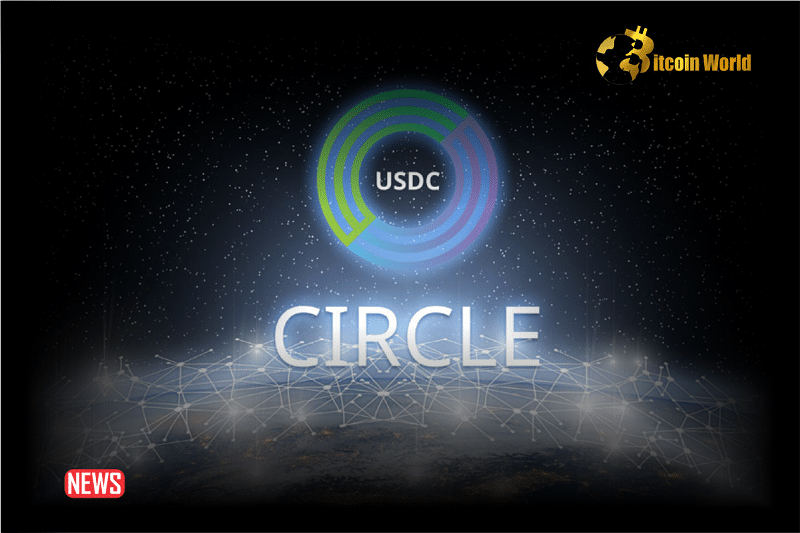Big news in the crypto world! Circle, the issuer of USD Coin (USDC), just dropped a bombshell: they are ending support for USDC on the TRON blockchain. If you’re holding USDC on TRON, or just keeping up with stablecoin developments, this is something you need to pay attention to. Let’s dive into what this means and why it’s happening.
What’s Going On? Circle Ends USDC Minting on TRON
In a recent announcement, Circle stated they will no longer support USDC on the TRON network. Here’s the gist:
- Immediate Halt to Minting: Circle has already stopped creating new USDC on TRON.
- Phase-Out Timeline: Full support will be phased out by February 2025. That’s less than a year away!
- Why? Trust and Safety First: Circle emphasizes this move is about maintaining USDC’s reputation as a trusted, transparent, and safe digital dollar.
Essentially, Circle is tightening its belt and focusing on blockchains that align with its risk management and compliance standards.
Circle has discontinued support for USDC on the TRON blockchain. Effective immediately, Circle will no longer mint USDC on TRON. Transfers and redemption of USDC on TRON will continue to be supported through February 2025. For more information, please visit our support page: https://t.co/kw9uorumgH
— Circle (@circle) February 21, 2024
Who is Affected by This Decision?
This change impacts different users in slightly different ways:
- Circle Mint Business Customers: You’re directly affected. Minting on TRON is over, but you can still move your TRON-based USDC to other supported blockchains until February 2025.
- Retail Users (Non-Circle Mint): If you hold USDC on TRON through exchanges or wallets, you’ll need to transfer your USDC to platforms that support USDC on other blockchains (like Ethereum, Solana, etc.) before the deadline.
Actionable Insight: If you hold USDC on TRON, start planning your migration now! Don’t wait until February 2025 to avoid any last-minute rush or complications.
Why TRON? The Unspoken Reasons
Circle hasn’t explicitly stated *why* they’re dropping TRON. Their official statement is pretty general:
“As part of our risk management framework, Circle continually assesses the suitability of all blockchains where USDC is supported. Our decision to discontinue support for USDC on TRON is the result of an enterprise-wide approach…”
Sounds corporate, right? Let’s decode what might be behind this:
- Risk Management: This is the key phrase. Circle is a regulated entity, and they are likely tightening their risk controls. TRON has faced scrutiny in the past, which we’ll touch upon.
- Compliance Concerns: Circle mentions “compliance” as part of their decision-making process. This suggests regulatory considerations might be playing a role.
- Focus on “Trusted, Transparent, and Safe”: This mantra is repeated. It signals a move towards networks perceived as more aligned with these values.
TRON’s Baggage: A History of Scrutiny
While Circle isn’t pointing fingers, TRON and its founder, Justin Sun, haven’t been strangers to controversy. Here’s a quick recap:
- Allegations of Ties to Illicit Activities: Reports have linked the TRON network to international law enforcement actions involving organized crime and sanctioned entities.
- SEC Lawsuit Against Justin Sun: In March 2023, the SEC sued Sun and the Tron Foundation for allegedly selling unregistered securities and manipulating trading practices. Sun denies these allegations.
- Campaign for Accountability Claims: This group previously accused Circle of providing services to Justin Sun and raised concerns about potential compromises due to TRON network integration.
It’s plausible that these factors, while not explicitly stated by Circle, contributed to their decision to distance themselves from the TRON ecosystem. Maintaining a squeaky-clean image is crucial for a regulated stablecoin issuer.
USDC: Still a Crypto Giant, But Diversifying
Let’s not forget the bigger picture. USDC remains the second-largest stablecoin globally, boasting a market cap of over $28 billion. It’s a major player in the crypto space, even ranking among the top 10 cryptocurrencies overall.
However, USDC’s distribution is heavily skewed:
| Blockchain | USDC Circulating Supply (Approx.) |
|---|---|
| Ethereum | $22 Billion+ |
| Solana | $1.4 Billion |
| Polygon | $530 Million |
| TRON | $313 Million |
Source: DefiLlama
As you can see, TRON’s share of USDC is relatively small compared to Ethereum. This might also factor into Circle’s decision – focusing resources where USDC is most utilized.
See Also: Turkish Central Bank Completed First Phase Of Its Digital Turkish Lira
Circle’s Broader Strategy: Expansion and Public Listing
This move comes at a time when Circle is making significant strategic shifts:
- European Expansion: Circle is actively seeking licenses in Europe to grow its market presence.
- US Public Listing: Circle recently disclosed plans to go public in the United States, highlighting the importance of USDC to its business.
Ending TRON support could be part of a broader strategy to streamline operations, focus on key markets, and enhance its regulatory standing as it prepares for public markets.
In Conclusion: A Strategic Retreat for Circle, A Shift for USDC on TRON
Circle’s decision to end USDC support on TRON is a significant event in the stablecoin landscape. While the company cites risk management, the backdrop of regulatory scrutiny and TRON’s controversial past likely played a role. For users of USDC on TRON, the message is clear: it’s time to migrate your assets. For Circle, this appears to be a strategic move to solidify USDC’s position as a trusted and compliant digital dollar as they pursue further growth and public market ambitions.
Disclaimer: The information provided is not trading advice. Bitcoinworld.co.in holds no liability for any investments made based on the information provided on this page. We strongly recommend independent research and/or consultation with a qualified professional before making any investment decisions.
#Binance #WRITE2EARN
Disclaimer: The information provided is not trading advice, Bitcoinworld.co.in holds no liability for any investments made based on the information provided on this page. We strongly recommend independent research and/or consultation with a qualified professional before making any investment decisions.


